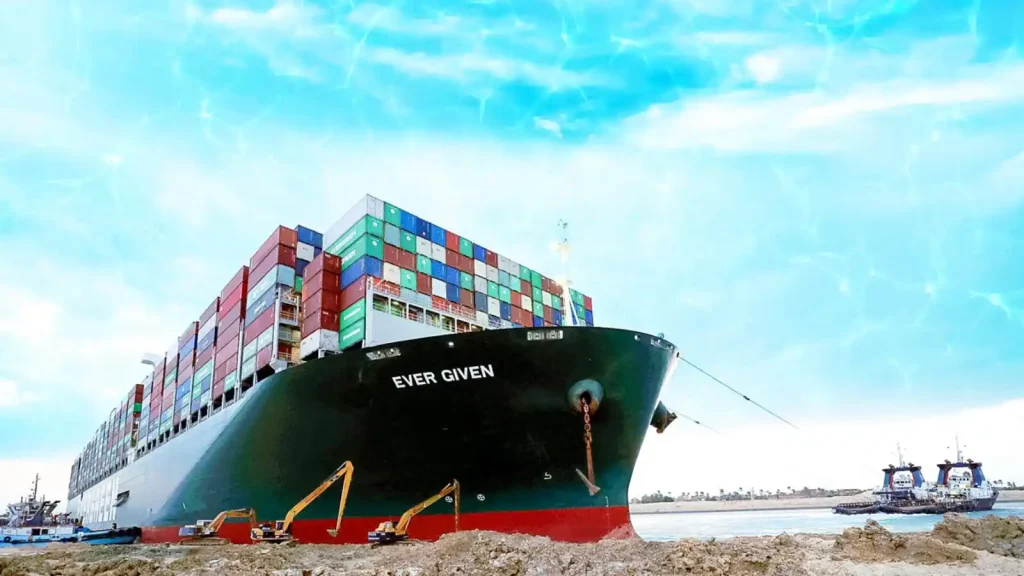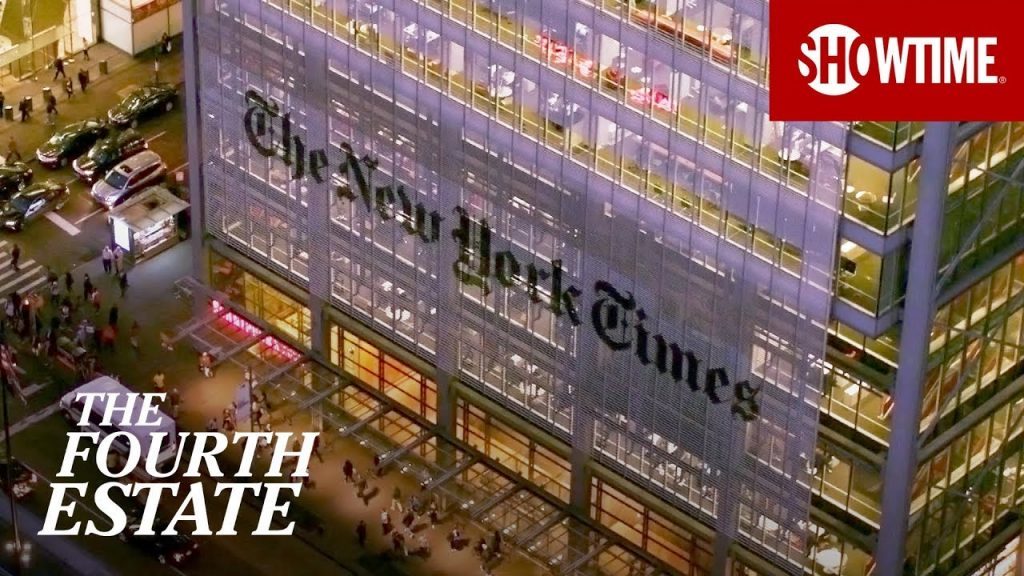Why Ships Crash: On March 23, 2021, the colossal container ship Ever Given, one of the largest ever constructed, collided with the sandy embankment of the Suez Canal, bringing a critical maritime route to an abrupt halt. This mishap obstructed one of the most crucial shipping arteries globally, freezing the passage of vessels for nearly a week. As a result, a “ship jam” of over 300 vessels formed, stalling the delivery of essential goods including food, fuel, and medical supplies valued at billions of pounds. The ripple effects of this disruption reverberated through the global supply chain for months, highlighting the fragile interconnectedness of international trade.
How could such a technologically advanced vessel crash in one of the world’s most meticulously monitored shipping lanes? What methods did the engineering team employ to liberate the ship in a mere six days? And ultimately, where does the fault lie? This documentary delves into the intricate details of the Ever Given incident, featuring never-before-seen footage and first-hand accounts from witnesses who are speaking out for the first time. Coupled with expert analysis, the film seeks to unravel the inside story of this unprecedented maritime event.
With over 2,500 shipping incidents occurring annually, the film also examines whether the Ever Given’s grounding was a freak accident or if it exposes fundamental vulnerabilities within the global supply chain. The Ever Given’s journey through the Suez Canal started uneventfully. However, a combination of strong winds and human error led to the ship veering off course and embedding itself in the canal’s eastern bank. The blockage not only caused significant delays but also highlighted the critical importance of the Suez Canal, through which approximately 12% of global trade passes.
In the immediate aftermath, efforts to dislodge the vessel were intense and multifaceted. Tugboats, dredgers, and excavators worked tirelessly day and night. Engineers faced the daunting task of moving a ship weighing over 200,000 metric tons and measuring 400 meters in length. This Herculean effort required precise coordination and expert maneuvering, ultimately leading to the ship’s release on March 29, 2021.
The documentary features exclusive interviews with the engineers and salvage crews who played pivotal roles in the rescue operation. Their insights provide a behind-the-scenes look at the challenges they faced and the innovative solutions they employed. The narrative also incorporates perspectives from maritime experts who analyze the broader implications of the incident.
Furthermore, the film investigates the chain of events leading up to the grounding. It explores the role of weather conditions, technical malfunctions, and possible human errors. By examining these factors, the documentary aims to provide a comprehensive understanding of how such a sophisticated vessel ended up stranded in the Suez Canal.
Beyond the immediate incident, the Ever Given grounding serves as a case study for examining the robustness of global supply chains. The documentary delves into the cascading effects of the blockage, from delayed shipments to skyrocketing shipping costs and the resultant economic impacts on various industries. It questions whether the current infrastructure and protocols are sufficient to handle such crises and what measures can be implemented to prevent future occurrences.
The narrative also considers the environmental impact of the incident. The Suez Canal, a vital ecological zone, faced significant risks due to the grounding. The film explores the potential long-term effects on the canal’s ecosystem and the broader implications for maritime environmental policies. “Why Ships Crash” not only recounts the dramatic story of the Ever Given but also situates it within the context of ongoing maritime challenges. The film underscores the importance of resilient supply chains and the need for continuous improvement in maritime safety and infrastructure.
As viewers are taken through the gripping tale of the Ever Given, they are also invited to ponder the broader questions it raises about global trade and logistics. Can the world’s shipping routes be made more secure? What lessons can be learned from the Ever Given incident to prevent similar occurrences in the future?
Through a blend of dramatic visuals, expert testimonies, and in-depth analysis, “Why Ships Crash” offers a comprehensive exploration of one of the most significant maritime events in recent history. It is a must-watch for anyone interested in understanding the complexities of global trade and the pivotal role of maritime transportation in the modern world.
Why Ships Crash – Anatomy of a Crisis
The colossal container ship Ever Given became a household name in March 2021, not for its record-breaking cargo capacity, but for its role in an unprecedented global crisis. For six days, the Ever Given wedged itself like a titan’s cork in the Suez Canal, a vital artery of international trade. Billions of dollars of goods stood frozen, and ripples of disruption coursed through supply chains worldwide.
Beyond the Headlines: A Human Story
News reports documented the Ever Given’s grounding and its eventual dislodgement. This documentary goes beyond the headlines, weaving a narrative rich with human experience. Eyewitnesses, from harried canal officials to crewmembers aboard the Ever Given itself, will share their stories for the first time. We’ll hear the rising tension in the canal control room as the enormity of the situation dawned. We’ll feel the frustration of sailors on the Ever Given, cut off from the world and facing immense pressure.
Unveiling the Cause: A Complex Equation
The grounding of the Ever Given wasn’t a simple case of bad steering. This documentary will delve into the complex equation that led to the colossal vessel blocking a crucial waterway. Technical experts will explain the factors at play, including the immense scale of modern container ships, the ever-demanding push for faster transit times, and the ever-present challenges of navigating narrow waterways. The program will also explore the role of environmental conditions, such as strong winds or currents, that may have contributed to the incident.
Lessons Learned: Preventing the Next Crisis
The ramifications of the Ever Given crisis were far-reaching. This documentary will examine the lessons learned from this incident and the steps being taken to prevent similar occurrences in the future. We’ll look at potential changes in ship design, canal regulations, and emergency response protocols. Industry experts will weigh in on the evolving landscape of maritime safety and the ongoing quest to balance efficiency with risk mitigation.
Why Ships Crash – Anatomy of a Crisis is more than just a retelling of a dramatic event. It’s a chance to gain a deeper understanding of the intricate world of global shipping, the human cost of logistical breakdowns, and the ongoing efforts to ensure the smooth flow of goods across the world’s oceans.
F.A.Q. Why Ships Crash
1. What led to the grounding of the Ever Given in the Suez Canal?
A.: The grounding of the Ever Given was primarily attributed to a combination of strong winds and human error. As the vessel navigated through the narrow waterway, high winds caused it to veer off course, ultimately embedding its bow in the canal’s eastern bank. This event highlighted the challenges of maneuvering large ships in constrained environments and the critical importance of accurate navigation.
2. How significant was the impact of the Ever Given blockage on global trade?
A.: The blockage of the Suez Canal by the Ever Given had a profound impact on global trade. The six-day obstruction halted the passage of over 300 ships, delaying the delivery of essential goods worth billions of pounds, including food, fuel, and medical supplies. This disruption caused a ripple effect through global supply chains, leading to increased shipping costs, extended delivery times, and economic repercussions across various industries.
3. How was the Ever Given freed from the Suez Canal?
A.: The effort to free the Ever Given involved a coordinated response utilizing tugboats, dredgers, and excavators. The engineering team worked tirelessly, removing sand and mud around the ship’s bow and stern to reduce resistance. Tugboats applied force to nudge the vessel back into the waterway. After six days of intense labor and precise maneuvering, the ship was successfully refloated on March 29, 2021.
4. What does the documentary “Why Ships Crash” explore about the Ever Given incident?
A.: The documentary “Why Ships Crash” delves deeply into the Ever Given incident, presenting never-before-seen footage and first-hand accounts from witnesses and experts. It investigates the sequence of events leading up to the grounding, the technical and environmental factors involved, and the rescue operation’s challenges. The film also examines the broader implications for global supply chains and maritime safety, questioning whether such incidents reveal inherent vulnerabilities in the system.
5. What lessons have been learned from the Ever Given incident to prevent future occurrences?
A.: The Ever Given incident has prompted a reevaluation of maritime safety protocols and ship design. Measures being considered include stricter navigation regulations in critical waterways like the Suez Canal, improved vessel tracking and monitoring systems, and enhanced training for crew members. The incident also underscores the need for robust contingency plans and swift emergency response capabilities to minimize the impact of such disruptions on global trade.
6. How does the Ever Given incident highlight the importance of the Suez Canal?
A.: The Suez Canal is a vital artery for global trade, facilitating the passage of approximately 12% of the world’s goods. The Ever Given incident underscored the canal’s importance by demonstrating how its blockage can severely disrupt international supply chains. The event highlighted the canal’s role in connecting economies and the potential vulnerabilities in global logistics that can arise from such chokepoints.




